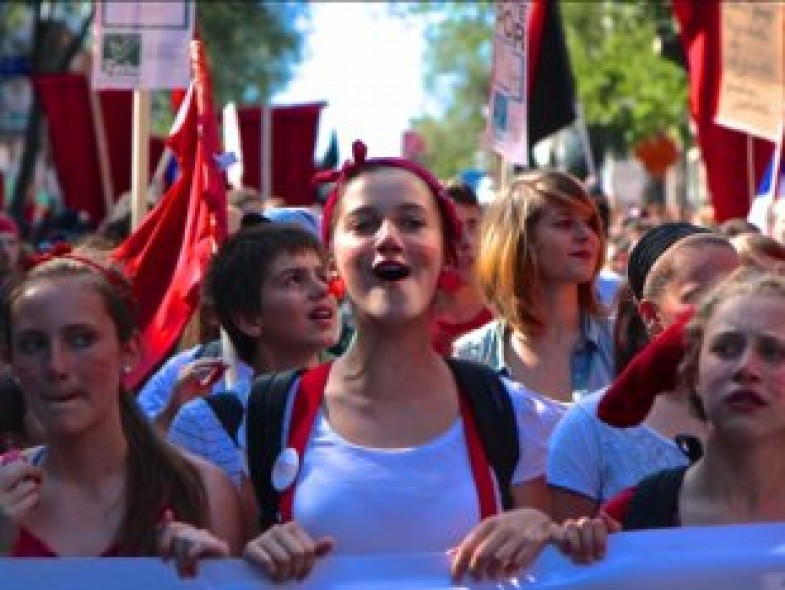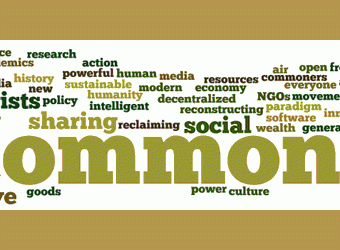On September 4, Quebec’s student movement, admired for its 300,000-person protests, provided a less sensational model for youth worldwide — of a movement struggling with the contradictory effects of a hotly contested election.
After six months of protests against Premier Jean Charest’s 75-percent tuition hike and Law 12 (which severely limited students’ right to protest), Quebec’s citizens marched to the polls to oust Charest’s Liberal party and install Pauline Marois and her separatist Parti Quebecois. Marois surprised many who were skeptical of her support for students with her first ministerial decrees, promising to cancel the tuition hike, repeal Law 12 and hold a summit to renegotiate education financing. As a bonus for students, Charest lost his local race, ending his political career altogether.
Nonetheless, CLASSE, Quebec’s most influential student union, remains vigilant in its monitoring of the new government until reforms are implemented, and many point out that Marois’ plan for education financing is based on indexing tuition with inflation — still a significant bump from current prices. Furthermore, with a measly 54 of 125 seats, Marois’ minority government will have to be frugal with its political capital, and it has expensive items on its wish list (namely, Quebec’s independence) that might edge out education as the focus of political attention.
Most students declare Marois’ win a modest victory for their cause. But whatever this election may eventually deliver for students, they are dimmed in large part because the election broke the back of the student strike, paralyzing the movement in the process.
Quebec’s movement was built on an alignment against a specific tuition fee, but many mobilizers connected the chants against student debt to deeper critiques of the neoliberal state. In August, the election bitterly divided students along these political lines in General Assemblies, debating whether to trust politicians, keep striking until demands were met, or build independent power. The discord so diminished the movement’s leverage, decimating the number of students on strike from 150,000 to 35,000, that by September 4, students could do little but cross their fingers and hope that Marois would fully repeal the tuition hike, despite having only promised to temporarily freeze it.
But when considering the election’s long-term impact on the movement, the picture is even more nuanced. Because while the election’s schismatic effects betrayed how shaky student power can be in comparison to the institutionalized power of the state, it also revealed what students had built that may be more durable in the long run — their ability to govern themselves.
Protest Power Takes a Backseat to Electoral Power
Even before the announcement of the election on August 1, the movement was having trouble maintaining the (astonishing) level of intensity it had amassed in the early part of the summer, when it held over 100 consecutive nights of casserole marches. In context of the newly diminishing demonstrations, the national demonstration in August was a paradoxical display of protest power. Although the march boasted 100,000 marchers according to CLASSE’s estimates, many protesters seemed to have recognized by that point that the battleground had moved from the street to the voting booth.
The red square, a popular symbol of Quebec’s student protests, was still pinned to shirts in near ubiquity, but the demonstrators varied widely on other apparel choices. Many donned “Votez” pins, and held signs saying “Je Vote Pour___” with political parties like Parti Quebecois and Québec Solidaire, or phrases like “I vote with my heart,” scribbled in the blank. Others wore all black and tore off any posters of politicians that they march passed. If the sign were of Charest, it would likely be splattered with red paint and stomped on as well.
While the movement never explicitly rejected the political system, its chants had typically been thick with anti-capitalist rhetoric. Now, however, the movement was focusing on influencing, rather than critiquing or refusing that system.
Out of the Streets, Into the Hands of School Administrators
With the fight no longer based in the streets, the students were separated from the allies — parents, teachers, senior citizens — they had amassed over the months, and school administrators reasserted power.
In the heat of the strike, Charest had suspended the winter semester at 25 schools and set classes to resume in mid-August, first for CÉGEPs (junior colleges) and then universities. Early in the week of August 13, two influential CÉGEPs — de Saint-Laurent and du Vieux-Montréal — voted to continue striking and two opted to go back to school. But by mid-week, a half dozen other junior colleges decided to quit striking and it was clear the tide had turned. After the loss of support, students at the two striking CÉGEPs petitioned for a re-vote, and on August 17 they reversed their schools’ initial decisions, ending their strikes.
While CÉGEP students relented, they were not voting in a neutral context. Some administrations threatened arrest and failing grades for all students who voted to continue striking, citing Charest’s Law 12, which imposes heavy punishment for hindering access to any public institution. Schools also sent emails to students telling them to return to class without consulting or informing student associations. At CÉGEP de Lionel-Groulx, 11 teachers were threatened with firings for publishing an open letter condemning violence against students at the college. Many schools cut financial aid for the shortened fall semester, further dividing students.
A week later, Quebec’s universities faced similar conditions when voting on whether to return to class. Although about 35,000 students at L’Université du Québec à Montréal (UQAM) and Univerité de Montréal (UdeM) voted to keep striking, the administration at UdeM threatened F’s or incompletes for students that did not return to class, and called for additional police on campus, even standing outside of classrooms. On August 28, when students at UdeM picketed classes to enforce their strike, 10 were arrested.
The prefigurative power of the movement has been recognized by many, like Montreal-based blogger Andrew Gavin Marshall who claimed the assemblies organized by students created “a parallel educational structure within society, making the existing one increasingly obsolete.” These General Assemblies, and the student unions that organize them, are also political structures independent of the establishment, which don’t need to reach parity with mainstream political institutions in order to shake the system.
Is the Student Movement Dead?
Quebec’s student movement pressed hard on the levers of the province’s social democracy, bringing international condemnation on Charest’s anti-protest regime, pressuring the government to call an election, and mobilizing voters against Charest. But in the end, Parti Quebecois was elected without ever having to promise the students more than a hazy education summit.
Marois certainly knew that canceling the tuition hike would win her favor among students, but she could easily have decided not to — and the students, recently returned to school, would have had the choice to re-strike or give in. Heading into elections, students were realizing that despite their impressive protests, stubborn politicians could likely outlast them.
It’s a sobering lesson in realpolitik. The state called an election. The students lost their steam in the streets, called off their strike, and elected a party that had promised little. The left-wing Québec Solidaire, the only party advocating for free education, won just two seats.
But the election also highlights a quieter victory of this movement; it prepared a generation of Quebeckers to lead themselves in political bodies that subscribed to a different type of democracy. Not only are the students capable of self-governance, they like it. After a student named Joly had voted for a time extension at one meeting, another student teased her that she wanted to stay all night. Joly smiled, “I brought my sleeping bag!”
Reprinted from Alternet, a progressive news service.







